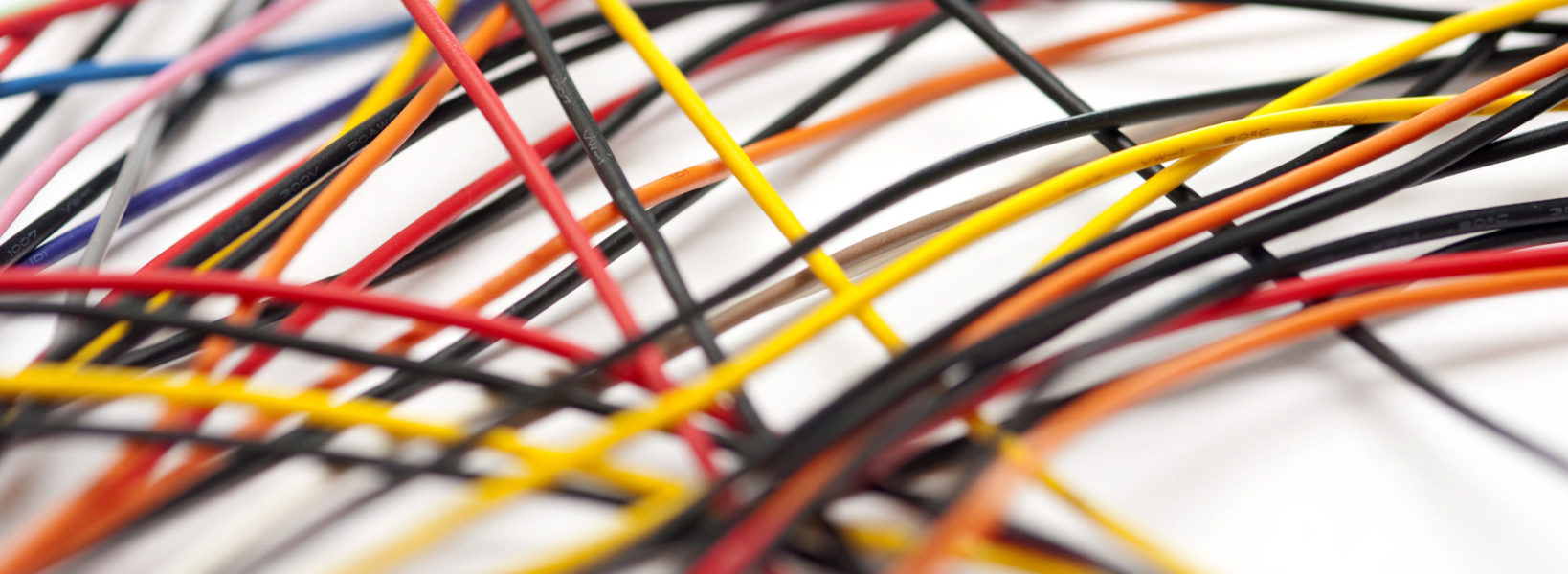
30 Oct Why Not Go Wireless?
Using wireless interpreting equipment provides a plethora of advantages. So why are so many of us still not using it? This technology allows interpreters to whisper into a microphone so our interpretation can be heard through headphones. The transmitter and the receiver(s) are not connected by wires, so we are not forced to be stuck together at the hip with the Limited English Proficient (LEP) court users. Why go old school when this technology offers so many advantages? Here are some of the awesome perks:
1. A better understanding of the original message: Not having to whisper directly into the LEP court user’s ear means that we are free to turn our heads to actually look at the people who are talking. We “hear” with our eyes as well, so watching the speakers’ lips and gestures is instrumental to clearly capturing the original message.
2. Interpreter mobility means fewer interruptions: Thanks to the wireless equipment, we may walk around the courtroom (discreetly, of course) to better hear those speakers who mumble and/or talk at a low volume. Hearing everyone clearly means not having to interrupt the proceeding as often to request repetitions. Yay!
3. Clear reception of the interpretation: Courtrooms are noisy. The headphones allow the LEP court user(s) to hear our interpretation clearly with less noise interference. Additionally, semi-bilingual court users often get overwhelmed when hearing the message in both languages, but using the headphones allows them to concentrate solely on our interpretation.
4. Better conditions for the hard of hearing: Whispering into the ear of an LEP court user who can’t hear well simply doesn’t cut it. The interpreting equipment allows those who are hard of hearing to pump up the volume according to their own particular needs.
5. Multiple court users can clearly hear the full rendition at the same time: When the LEP court users are not provided with headphones, they have to huddle together to hear the whispered interpretation. Typically, only the LEP court users who are located right next to the interpreter’s mouth (one or two people at best) are able to hear the full whispered interpretation. The rest have to settle for hearing some parts of the interpretation, but certainly not the full shebang. That simply does not amount to the type of access to justice compared with an English-speaking court user who can hear the entire court proceeding.
6. Efficient use of our human resources: In some cases, an interpreter is assigned to each of the various LEP court users. That’s not the most efficient use of human resources, especially since many courtrooms already have interpreting equipment with which only one active interpreter is needed at a time. Additionally, the cacophony of several simultaneous interpretations whispered at once can be quite distracting and can severely impede each interpreter from clearly hearing the original speech.
 7. Opposing (and contentious) parties can stay away from one another: When wearing headsets, parties don’t have to remain close together in order to hear the whispered simultaneous interpretation. If you were the victim of a crime, would you want to huddle close to your aggressor?
7. Opposing (and contentious) parties can stay away from one another: When wearing headsets, parties don’t have to remain close together in order to hear the whispered simultaneous interpretation. If you were the victim of a crime, would you want to huddle close to your aggressor?
8. Lower risk of disease transmission: Using wireless equipment and not having to breathe in anyone’s face protects everyone (us and the people receiving our services) from getting sick… and also, at times, from smelling funky body odors.
9. Fewer safety risks: Some court users can be aggressive and volatile. The wireless equipment allows us to keep a safe distance.
10. A smoother transition from one mode to another: The wireless equipment allows us to seamlessly switch from the simultaneous to the consecutive modes whenever necessary, without missing a beat. Whenever LEP court users testify and when they are addressed, we may render the messages in the consecutive mode at a volume that is audible throughout the whole courtroom. Whenever LEP court users are not speaking and when they are not being addressed directly (for example, during colloquy and objections), we whisper the simultaneous rendition into the microphone. Because the LEP court users are using their headphones, they don’t miss a thing, and we don’t even have to change our body position or lean in towards anyone to be heard.
11. Healthier ergonomics: I am usually much taller than most LEP court users I serve. Having to hunch over to reach their ear level can be quite uncomfortable, painful, and distracting. After a long court proceeding without interpreting equipment, my back, shoulders, and neck always end up begging for mercy.
12. A clear record: Because the microphone is so sensitive, we can whisper at a very low volume and the interpretation will still be audible to the LEP court users through their headphones. Therefore, our voice does not interfere with the record (whether it is voice recorded or taken down by a stenographer). On the other hand, the old-fashioned “huddling approach” requires “loud whispering” to be semi-audible to several LEP court users, which obviously interferes with the record.
13. A loud and clear reception of the original message: Some wireless interpreting equipment offer several channels. One of them transmits our interpretation. Another one plays everything that the courtroom microphones are picking up. This feature is designed for English-speaking court users who are hard of hearing. It allows them to listen to the proceedings while amplifying the volume to their needs. I like tuning into to this “assistive listening” channel using a single earbud. That way, with my free ear I can pick up those who are not talking into the microphones. Even though I have been tested and diagnosed with excellent natural hearing, this technology makes me feel like I have auditive superpowers. I can happily say that I never want to work without it again. If the original message comes in crystal clear, our interruptions plummet, and our chances of achieving accuracy skyrocket.
 14. A more accurate and complete record: If interpreters listen to the hard-of-hearing channel, we can detect whether our interpretation is picked up by the court microphones. Is our consecutive rendition not being captured? We can speak up or come closer to the mic. Is our simultaneous interpretation drowning out the English speakers? We can distance ourselves from the microphones. Is someone not talking into the mic, and will their words not be captured for posterity? We can alert them of this issue. Hearing what the mics pick up enables us to do our part to keep the record intact.
14. A more accurate and complete record: If interpreters listen to the hard-of-hearing channel, we can detect whether our interpretation is picked up by the court microphones. Is our consecutive rendition not being captured? We can speak up or come closer to the mic. Is our simultaneous interpretation drowning out the English speakers? We can distance ourselves from the microphones. Is someone not talking into the mic, and will their words not be captured for posterity? We can alert them of this issue. Hearing what the mics pick up enables us to do our part to keep the record intact.
If you have never tried wireless interpreting equipment or an assistive-hearing option, I urge you not to be afraid to start. You can always play with them when the courtroom is empty. They are pretty simple to use, you’ll probably get the hang of it in no time, your accuracy will improve, and you will love the results.
In short, practicing the simultaneous mode without wireless interpreting equipment is as archaic as doing corrective eye surgery with a scalpel instead of laser. Why settle for sloppy results when the technology available offers less intrusiveness, higher accuracy, greater clarity, more safety, hygiene and efficiency, and painless results?
Virginia Valencia is first and foremost a teacher. When she was only 15 years old, she began helping children do their homework after school and has not stopped teaching ever since. She is also a professional psychologist (Universidad del Valle, Cali, Colombia, 2001). Drawing from her background in psychology, her classes are delivered through student participation, dynamic games, and time-limited drills.
In 2003, Virginia became a certified court interpreter. She has worked in the fields of medical, legal, and conference interpretation. She is also certified by the U.S. Courts (Federal Certification, 2008) and is certified/approved by the Superior Courts of New Jersey (2005), New York (2006), and California (2012).
Over a decade ago, Virginia and her husband, Brad Wilk, founded Interpretrain (www.interpretrain.com). Their training company offers innovative online study tools for interpreters of all levels and all languages, helping many interpreters achieve their professional goals. She currently lives in California, where she works as an interpreter, designs educational materials, and offers online and live trainings for aspiring and professional interpreters. Look up Interpretrain at https://interpretrain.com.
Featured image (cropped) from “Tangle of colorful electric wires and cables” from freebie photography, under a CC BY 3.0 license. Text-body photos: from “Marbella vinculará en Pleno los fondos recuperados de causas judiciales a proyectos elegidos por los vecinos” by Europa Press at marbella CONFIDENCIAL, under a CC BY-NC-SA 4.0 license; and “Los retos del sistema judicial en Colombia” by Edna Sastoque and Angie Culma at razonpublica, under a CC BY-NC-SA 3.0 license.


It works when you have longer cases. I agree. But when you’re in a Courthouse and you’re handling cases in multiple courtrooms for a few minutes at a time, in my humble opinion, doing this for over 20 years, is just not practical. But again that’s just me.
Wireless is the best way to do interpretation. We have been using wireless interpretation for about 30 years. First we had William Sound, but at that time changing channels in their equipment was complicated as well as interference from other courthouse devices, so we switched to CSI Systems which was a lot easier and which we still use. The Minnesota courts ALL have been quipped with wireless equipment for the interpreters. I also use the courtroom hearing impaired equipment, in order to hear the voices of all participants directly from their microphone and to control the volume of what I hear. This avoids having to ask for repetition or to ask the speaker to speak a little louder. It is the best aid for the interpreter. The courtroom hard of hearing equipment must be available in every courtroom as mandated by ADA.
I have my own equipment, but haven’t used it yet. The reason I’ve been hesitant to sit far away from the defendant /respondent is that oftentimes the lawyer wants to whisper something to the client quickly, and unpredictably. before things get started or during the process. If I’m not at the table nearby, this leaves the lawyer/ client unable to speak to each other during the process. How do you get around that? Let’s say the defendant/ responded answers “No” when the lawyer fully expected him to answer “Yes”. The lawyer will ask for a moment to re-explain something. I have to be near both parties.
Another reason is defendant might be in shackles. Very hard for them to move or adjust their headset/ earpiece in that condition.
I’ve also not been too persuaded to use my wireless equipment so far because the majority of my hearings last under 5 minutes from start to finish. I”m in small town courts doing traffic, DUIS, a continuance and pretty quick cases. Ergonomics hasn’t been an issue due to that. And in most cases, the defendant / respondent never speaks more than “Yes” “No” on a plea deal. Like Carlos says, maybe for longer cases in the right conditions.
I use it all the time and Judges love it! It saves time.
Please send phone number and address where I can buy interpreting equipment.
Also, Information for your 2023 conference & membership.